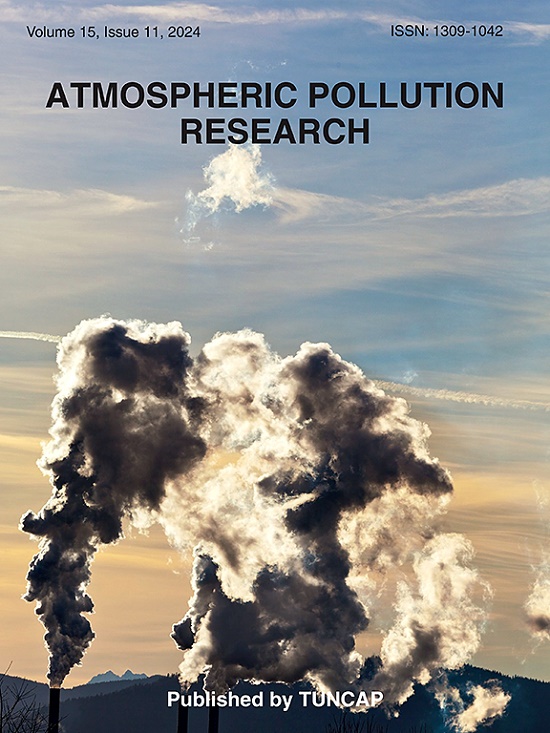PM2.5 and PM10 concentrations in urban and peri-urban environments of two Pacific Island Countries
IF 3.9
3区 环境科学与生态学
Q2 ENVIRONMENTAL SCIENCES
引用次数: 0
Abstract
Air quality monitoring in most Pacific Island Countries, Territories, and States (PICTS) is minimal, with notable exceptions in Hawai'i and New Caledonia. However, air quality issues are increasingly significant in the region. Existing data on air quality, particularly regarding PM2.5 and PM10, are limited, with studies focusing on Fiji and New Caledonia. Our research provides the first continuous and comparative air quality monitoring in urban and peri-urban areas of Fiji and the Solomon Islands, and it is the first assessment since the introduction of the 2021 World Health Organization (WHO) Air Quality Guidelines (AQG). This study assesses health risks and air pollution trends to inform governmental recommendations. We collected PM2.5, PM10, and weather data from Honiara, Solomon Islands (February 2020–August 2023), and Suva, Fiji (April 2021–August 2023). In Honiara, PM2.5 levels exceeded WHO AQG on 75% of days in urban areas and 51% in peri-urban areas, while PM10 levels surpassed guidelines on 2% of days in both areas. In Suva, urban areas had a 10% exceedance of PM2.5 guidelines, compared to 13% in peri-urban areas. Annual PM2.5 averages exceeded WHO guidelines every year, with levels in Suva and Honiara exceeding guidelines by 2–4 times. PM10 levels were 1.5 times higher than WHO AQG in urban Honiara and 1.2 times higher in peri-urban areas. These findings highlight the urgent need for governmental action to establish robust air quality standards and long-term monitoring programs in Fiji and the Solomon Islands to mitigate health risks from poor air quality.

两个太平洋岛国城市和城郊环境中的PM2.5和PM10浓度
除夏威夷和新喀里多尼亚明显例外,大多数太平洋岛屿国家、领土和州(PICTS)的空气质量监测很少。然而,该地区的空气质量问题日益严重。关于空气质量的现有数据,特别是关于PM2.5和PM10的数据有限,研究的重点是斐济和新喀里多尼亚。我们的研究首次在斐济和所罗门群岛的城市和城郊地区进行了连续和比较的空气质量监测,这是自2021年世界卫生组织(世卫组织)《空气质量准则》实施以来的首次评估。这项研究评估了健康风险和空气污染趋势,为政府的建议提供信息。我们收集了所罗门群岛霍尼亚拉(2020年2月- 2023年8月)和斐济苏瓦(2021年4月- 2023年8月)的PM2.5、PM10和天气数据。在霍尼亚拉,城市地区有75%的天数PM2.5水平超过世卫组织空气质量指标,城际地区有51%的天数PM2.5水平超过世卫组织空气质量指标,两个地区均有2%的天数PM10水平超过指导值。在苏瓦,城市地区的PM2.5超标10%,而城郊地区超标13%。年PM2.5平均值每年都超过世卫组织的指导方针,苏瓦和霍尼亚拉的水平超过指导方针的2-4倍。霍尼亚拉城市的PM10水平比世卫组织空气质量指标高出1.5倍,城郊地区高出1.2倍。这些调查结果突出表明,政府迫切需要采取行动,在斐济和所罗门群岛建立强有力的空气质量标准和长期监测方案,以减轻空气质量差带来的健康风险。
本文章由计算机程序翻译,如有差异,请以英文原文为准。
求助全文
约1分钟内获得全文
求助全文
来源期刊

Atmospheric Pollution Research
ENVIRONMENTAL SCIENCES-
CiteScore
8.30
自引率
6.70%
发文量
256
审稿时长
36 days
期刊介绍:
Atmospheric Pollution Research (APR) is an international journal designed for the publication of articles on air pollution. Papers should present novel experimental results, theory and modeling of air pollution on local, regional, or global scales. Areas covered are research on inorganic, organic, and persistent organic air pollutants, air quality monitoring, air quality management, atmospheric dispersion and transport, air-surface (soil, water, and vegetation) exchange of pollutants, dry and wet deposition, indoor air quality, exposure assessment, health effects, satellite measurements, natural emissions, atmospheric chemistry, greenhouse gases, and effects on climate change.
 求助内容:
求助内容: 应助结果提醒方式:
应助结果提醒方式:


